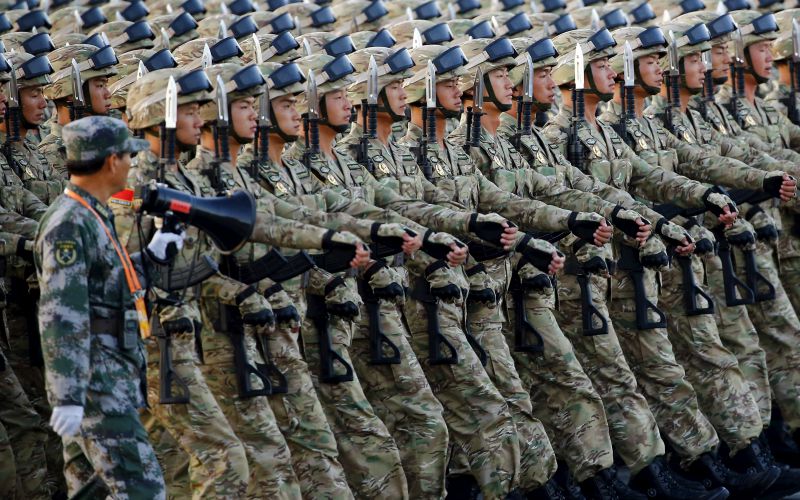BEIJING—With an extravagant parade, President Xi Jinping made the most forceful display yet of China’s expanding military muscle and his own grip on power, after weeks of rising concern about economic challenges and disunity at the top.
The spectacle featuring some of China’s newest fighter jets, missiles, drones and helicopters achieved its principal goal, offering a domestic audience a carefully choreographed show of national strength and Communist Party unity.
But the parade marking the surrender of Japanese forces at the end of World War II also cast a spotlight on China’s deepening divisions with the U.S. and its allies: No major Western nations sent leaders or troops to an event that appeared designed to discredit modern-day Japan and showcase Chinese firepower.
In further evidence of China’s growing military capabilities and ambitions, Pentagon officials said on the eve of the parade that five Chinese navy ships were operating off the coast of Alaska, where President Barack Obama has been visiting this week and where such activity hadn’t been seen before.
r. Xi tried to strike a conciliatory note in a speech before the parade, which comes three weeks before he heads to the U.S. on a visit already clouded by differences on alleged cyberattacks on the U.S., and China’s island-building in the South China Sea.
“We Chinese love peace,” Mr. Xi said from a stand atop the Gate of Heavenly Peace, overlooking Tiananmen Square.
“No matter how much stronger it may become, China will never seek hegemony or expansion. It will never inflict its past suffering on any other nation.”
He also announced that China’s People’s Liberation Army would be cut by 300,000 troops—the largest reduction in more than a decade of armed forces estimated to number around 2.3 million. A Defense Ministry statement later said the reductions would be done by the end of 2017 and would target units with outmoded equipment and noncombat personnel.
Still, many Western officials and analysts said it was the display of weaponry—including aircraft-carrier-based fighter jets and missiles they believe are designed to prevent the U.S. from intervening in a conflict in Asia—that defined the event, rather than the announcement of troop cuts.
“Displaying cutting-edge military hardware and announcing personnel cuts is not really a contradiction,” said Rory Medcalf, head of the National Security College at the Australian National University.
“In fact, it’s consistent—human waves of infantry are not going to win the next war in Asia,” he said. “Thinning the ranks of low-skilled soldiers will free up resources for high-tech capabilities like cyber and hypersonic missiles, and of course naval modernization.”
Among the high-tech armaments being displayed for the first time was the DF-21D antiship ballistic missile, which many experts call a “carrier-killer” because it is designed specifically to target approaching U.S. aircraft carriers.
The parade also showed for the first time the DF-26 intermediate-range ballistic missile, China’s first one capable of striking a U.S. naval base in Guam with a conventional warhead from a launcher on the mainland.
The U.S., which was represented at the parade by its ambassador in Beijing, had repeatedly urged China to hold a forward-looking event that promoted reconciliation. The U.S. Embassy didn’t immediately respond to a request for comment.
Congressman Randy Forbes, a Virginia Republican who heads a House committee on sea power, said in a statement after the parade: “It seems significant that while the United States marked the end of the war with a solemn ceremony, China chose to showcase its growing military might and the new weapons it has built to menace its neighbors. It seems increasingly clear that China intends to undermine the post-1945 order that has brought peace and prosperity to Asia.”
Japan’s Prime Minister, Shinzo Abe, didn’t attend. His top government spokesman, Chief Cabinet Secretary Yoshihide Suga, said Thursday: “We have conveyed to China our position that we would like it to adopt a future-oriented stance instead of placing a spotlight on the past.”









1 Comments
Tara Nath Ghimire
Tara Nath Ghimire liked this on Facebook.